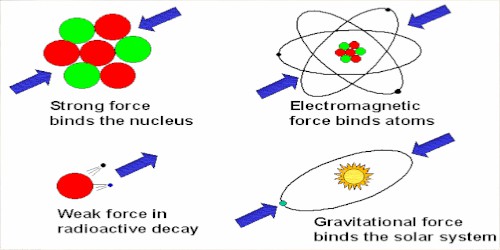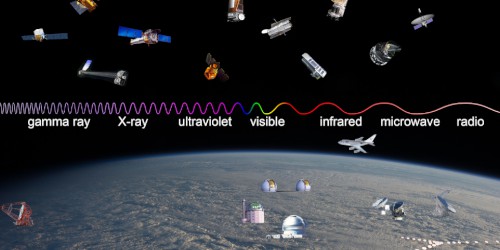Astronomy is the study of celestial objects and the universe, is one of the oldest sciences. Though complete understanding of it may not be within Homo sapiens’ reach. But by the time we are living in this area good progress has been made…
What is it over our head? Why they appear every night? How come it didn’t fall in? These are some of the question that early humans have we know the answers that they are starts and galaxies and because earth revolve around its axis we have night and they appear on day time they are still there but sunlight is more stronger so we can’t see them and they are very far away from us it takes billions of seconds for their light to reach us so there is no question to fall in except it is an asteroid …!!
But you must be wonder sometime how it’s all started (study of universe)…How we reach here. This blog is all about some of the most basic yet most astonishing facts and events in history of astronomy…
So let’s start with our old, old, old ancestors …What they think about sky over head .......
Star-gazing was likely a common evening pastime in ancient time. People would admire the beauty the sky. Some keen observers soon realized that there were a number of stars that wandered across the background of other stars in the sky. We don’t know when such observations were first made, but it is likely that it was made long before the invention of writings. Those stars were called planets – a name which implied wanderer in Greek. Later, systematic observations and records of the movement of planets of ancient astrology revealed that there were fixed patterns governing each planet’s movement.
Nicolaus Copernicus(1473-1543)
In his book “On the Revolutions of the Celestial Spheres”, he explained that the Earth was not the center of the universe, and the Earth is just one of the planets surrounding the Sun in what is known as the Solar System. As his model of the universe contradicted the Bible, he was afraid of publishing it till just days before he died.
Galileo Galilei (1564-1642)
His achievements include improvements to the optical telescope and subsequent observations of celestial objects and support for Copernicanism. With the aid of optical telescope, mankind was for the first time able to peer deeper into the space. Among other things, Galileo found that the Sun is just one of the countless of stars in the sky. Galileo’s support for Copernicanism, the theory that says Earth is not the center of the universe, brought him the rage of Catholic Church. He was put under house arrest for life. Both Copernicus and Galileo’s books were kept on an Index of Prohibited Books of the church till 1835.Galileo has been called “father of modern science”, “father of modern physics” for his works.
How this object name come from name come from?
Milky Way is a common subject in myths and poems of many cultures in ancient times. In Greek myth, it is milk spilt by goddess Hera. In China, it is known as Silver River. In India, it is Ganges of the heavens. Greek philosophers as early as 500 BCE had been speculating that Milky Way might consist of distant stars. Which only came to be known in 1610 when Galileo directed his telescope on Milky Way.
The second planet from Sun is the second brightest object after the moon in the sky at night. It is usually seen in the low horizon in the early morning in the east or early evening in the west and it shines like a diamond in the sky. The planet is named Venus, after the Roman goddess of love and beauty.
Now we know that Galaxies are groups of billions of stars and other stellar matters held together by gravitational force and separated from other groups by distance of millions of light-years apart.
This is what ancient believes and had knowledge about astronomy but if we fast forward to Newtonian area when the actual records and writing of made about night sky and it becomes field in itself ...
Issace Newton (1643-1727)
Law of Universal Gravitation was the first attempt to describe gravitational force: a force that acts on all the celestial heavy bodies like planets, star and galaxy with that time observational data. Its limitations came to be known in the 20thcentury when advances in technology allowed more accurate observations of celestial events.

Theory of Relativity
Gravitation and Theory of General Relativity Gravitation describes new idea of gravity and which is the weakest of the four known interactions (forces) between objects.
The other three are:
Electromagnetism, strong nuclear and weak nuclear interactions.
Strong and weak nuclear are short-range, effective only at distances the size of the nucleus of an atom.
Electromagnetism acts on electrically charged particles. Since all celestial objects are neutral in electrical charge, electromagnetism has no effect on them.
Gravitation acts on objects with mass, and it is long-range. It is the interaction that governs the structure of galaxies and the universe (except perhaps regarding accelerated expansion of universe).
Special relativity describes the relationship between space and time. It is based on two postulates: (1) that the laws of physics are the same in all non-accelerating frames of reference; and (2) that the speed of light in vacuum is the same for all observers, The theory implies length contraction, time dilation, relativistic mass and mass-energy equivalence (E=MC2)etc.


And then comes the era of electromagnetism after discovery of light dual nature of light.

The observation of the celestial objects first started with unaided eye, later with the use of telescope through light. However, light is but a very narrow part of the whole spectrum of electromagnetic radiation which covers radio waves, microwaves, infrared, visible light, UV, X-ray, gamma rays etc.
All electromagnetic radiations transmit at the speed of light which is a constant and independent of the relative velocity of the object and the observer. According to Special Relativity, it is the ultimate speed for all forms of matters.
For example, analyzing the atomic absorption of the light from a star would tell us its composition, measuring the red-shift of light from a celestial object would tell us its relative speed against the Earth. The measured brightness of a certain type of star reference - absolute luminosity would tell us its distance from us. All this is measure using different types of telescopes. Besides optical telescope, there are other types of telescope like radio, X-ray, gamma ray telescopes each covering a specific part of the whole electromagnetic radiation spectrum. There are also other types of telescopes (detectors) designed to observe gravitational wave and neutrinos etc.
Now that we are aware of all types of basic understanding of earlier time let’s talk about last 40 years of evolution in astronomy, what we find out about universe..
The Universe
Universe comprises of three elements we perceive to physically exist:
the entire space-time,
all forms of matters, and the
physical laws and constants that govern it.
It is believed not to be of infinite size but without edges. The observable universe is the region of universe that can, in principle, be observed from Earth at the present time because light and other signals from objects within the region has had time to reach the Earth since the beginning of cosmological inflation.
The size of an observable universe could thus be smaller than the universe. Observable universe is isotropic; the distance to the edge is roughly the same in every direction and wherever the observers are
The size of Observable universe Observable universe is spherical with a radius of about 46 billion light-years. It has about 100 billion galaxies and about 1000billion billion stars.
Universe originated in a Big Bang It is now generally accepted that the universe originated in a Big Bang some 14 billion years ago from an extremely hot and dense state. A number of observations support this. The main one: there is a constant and uniform microwave radiation coming from all directions and not associated with any celestial sources. It is thought that this microwave background radiation is the remnants of radiation created during the origination of the Universe
Observable universe is expanding Observations indicate that except for local cluster movements, all galaxies are moving away from us, and the further the galaxies, the faster their speed. An analogy is the baking of raisin bread; flour being space, raisins the galaxies. As the flour expands, raisins move away from each other, raisin sat twice the distance would move away at twice the speed.
Recent observations suggest that observable universe is expanding at an accelerated rate.
Dark Energy and Dark Matter
Dark matter Gravitation comes from matter with mass. Observations indicate that some galaxies are rotating at a speed faster than what could be held together by gravitation of the total known matters inside it. It is thus postulated that the force must come from some unknown matters otherwise the galaxies would be ripped apart. This unknown matter is called Dark matter as it has so far evaded any efforts to detect it. Currently, ordinary matter is thought to make up about 4.9% of the total matter of the Universe, with Dark matter about 26.8%.
Dark energy Dark energy is thought to be the matter that accounts for the accelerated expansion of universe. It is also “dark” as it too cannot be detected. Dark energy is thought to make up about 68.3% of the total matter of the Universe.
To make unified theory of everything there are many theories suggested by astronomers and physicist around the world but very few of them make it its way till now let’s explore that …
The Standard Model of Particle Physics
This is the theory for three of the four known fundamental forces (gravitational force is excluded) and the elementary particles that supposedly make up all forms of matters we know. It had made several predictions that were later found to be correct. Quantum Mechanics is the underlying theory for Standard Model. The standard Model offers no explanation relating to dark matter or dark energy. In July 2012, the apparent detection of the Higgs particle was announced. Higgs particle is an essential ingredient under Standard Model of particle physics.
String Theory and Superstring Theory
There are many versions of String Theory, but they all share a common theme which describes the physical world as strings vibrating in multi-dimensional space. One of the most inclusive is the 11-dimension M-theory variation, 7 extra space dimensions in addition to 4-dimension space time. There have been much heated arguments about String Theory. Those in support say it is a Theory of Everything. Those against it say it is just a mathematical manipulation, and that it makes no predictions.
Big Bang Model
Big Bang Model says that universe originated from a big bang some 14billion years ago and has been expanding since. Galaxies started to form about 1 billion years after universe originated. Scientists still do not know if universe would continue to expand or would it eventually collapses back in a Big Crunch. If universe has enough mass, it would collapse back otherwise it would expand to a cold dark vacuum
Oscillating Universe Model, Multiverse Model
One model speculates that the expanding Universe would be followed by a Big Crunch and start all over again in a Big Bounce in what is known as Oscillating Universe. Some other models say the Universe is not alone, there can be a parallel universe and/or many other universes exist alongside ours but not connected to each other. One version of String Theory says there can be up to 10500 disconnected universes altogether, each of which could have different laws and constants.
A complete understanding of the Universe is a task of astronomical scale, and there is probably no ultimate answer, at least not foreseeable in the near term. The fact that the two pillars of physical laws, General Relativity and Quantum Mechanics, do not reconcile with each other, and that both laws offer no easy answer for unexplained observations that are supposed to be explained by dark matter and dark energy presents both challenges and opportunities. Science is waiting for the next fundamental breakthrough.
And just a small mention of our place in vast universe…
Earth is the third planet from Sun. Sun is one of the 200 billion stars in the galaxy called Milky Way. The galaxy was probably created at about the same time as other galaxies a billion years after the Big Bang. Sun originated some 5 billion years ago, and Earth 4.5 billion years ago. Life on Earth started about 3.5 billion ago. Sun is expected to continue in the current life supporting stage for another 1.5 billion years beyond which its luminosity would eliminate life on Earth. Charles Darwin (1809-1882) taught us that all species of life have evolved over time from common and much simpler ancestors. The Earth is a big ecosystem for all life forms. Humans do not own it, together with others we cohabit in it. Modern humans originated from Africa some 200,000 years ago. In general, humans have been living in harmony with nature till about a hundred years ago when indiscrete use of natural resources in the name of progress started to create environmental problems. The pace of indiscrete use has quickened in the past decades, resulting in grave and some permanent damage to the climate and ecology environment. Humans will have to re-learn how to live in harmony with nature and will have to do it fast before more damages are done.